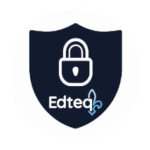L’arrivée des aides technologiques en classe réussit à faire changer les pratiques. « Ça a été pénible et ce n’est pas encore parfait. Avant, c’était “signe en haut, signe en bas”. Maintenant, si on a à cœur la réussite des élèves, on peut espérer une diplomation pour eux », croit Richard Ayotte.
Des changements sont maintenant observables auprès des élèves. Ils s’entraident spontanément. « Ça s’en vient l’fun. J’attendais ça. On a plein d’outils vraiment aidants pour ces élèves. Avant on voyait un paquet de fautes et on ne pouvait rien faire, tandis que maintenant, la technologie peut enfin les aider », se réjouit Isabelle Goyette.
Dans son livre Troubles d’apprentissage et technologies d’aide, Nadia Rousseau relève un certain nombre de défis associés au succès de l’intégration de tels outils. Elle évoque entre autres l’ouverture du milieu scolaire à l’évolution technologique et à son potentiel compensatoire, la formation continue des intervenants, la connaissance de soi de l’élève et son appropriation des outils de même que l’exploitation du plan d’intervention comme outil de concertation.
Elle énonce aussi plusieurs recommandations de participants à des études à leurs collègues.
« Cessez d’avoir peur. Sautez dans l’action et apprenez à utiliser ces outils. Débutez tranquillement; cela prend du temps et de la planification pour transformer sa classe en une classe technologique. N’utilisez pas les technologies comme une récompense ou une activité libre pour les élèves. Offrez-leur plutôt un programme technologique qui leur présente des défis »
Et, enfin : « Les technologies sont des outils puissants lorsqu’ils sont utilisés par des enseignants efficaces ».
Référence : Rousseau, Nadia. (2010). Les troubles d’apprentissage et technologies d’aide : l’accès à une vie scolaire riche et stimulante, Guide destiné aux enseignants et aux autres professionnels de l’éducation, Québec. Septembre éditeur et Centre de transfert pour la réussite éducative du Québec (CTREQ).
SOMMAIRE DU DOSSIER :
Introduction
1. Connaître enfin le succès grâce à la technologie
2. Des TIC pour aider les élèves ayant des troubles d’apprentissage : une injustice pour les autres?
3. Technologies d’aide aux troubles d’apprentissage : le défi technopédagogique des enseignants
4. Numériser son matériel traditionnel : guide de survie
5. Déploiement d’aides technologiques : des changements à prévoir dans la classe
6. Technologies d’aide et évaluation ministérielle
Conclusion



 Recevez l'infolettre Hebdo mardi #Actu et vendredi #DevProf pour ne rien manquer des nouveautés de l'École branchée!
Recevez l'infolettre Hebdo mardi #Actu et vendredi #DevProf pour ne rien manquer des nouveautés de l'École branchée!






